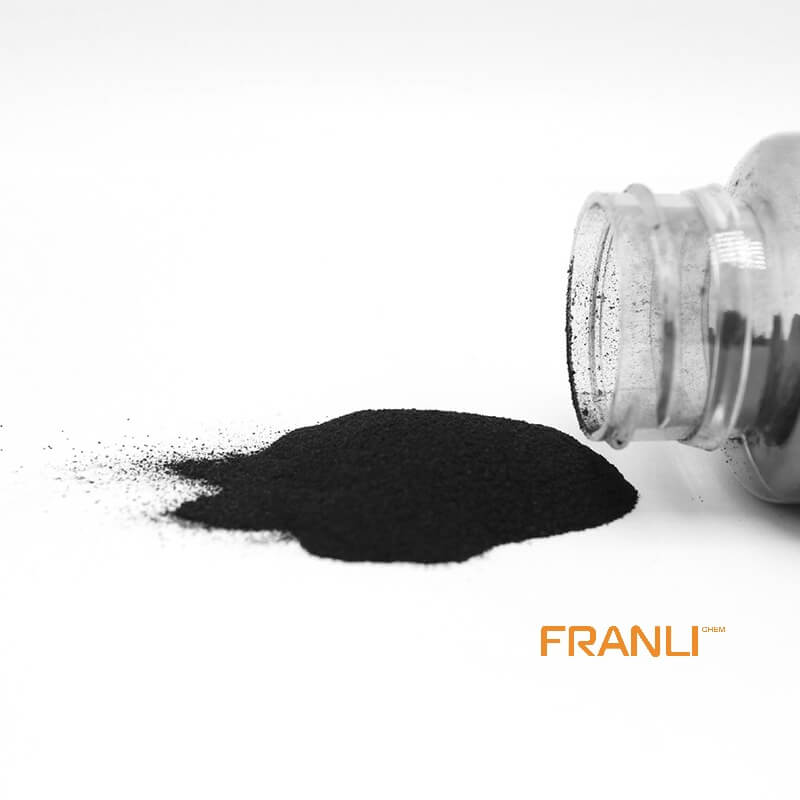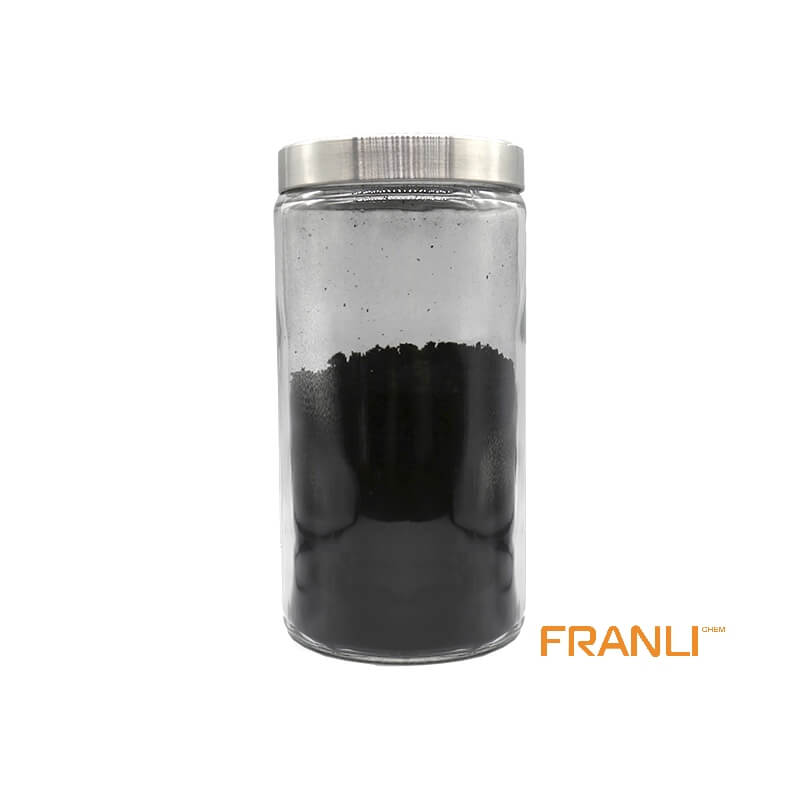

Graphene
Size
1-2nm thick x 0.5-5microns wide
Package
According to customer requirements
Features
High strength, high electrical conductivity, etc.
Application
Can be used as filler(between 0.01% and 5%).
Graphene, as the thinnest, toughest and best conductive nano material found at present. It is a two-dimensional crystal composed of carbon atoms stripped from graphite material with only one layer of atom thickness. Known as “black gold”, it is “the king of new materials”. Scientists even predicted that graphene “will completely change the 21st century”.
Request a quote
The history of graphene oxide
Carbon allotrope
The history of graphene oxide goes back more than 150 years! Originally known as graphite oxide, it was first made in 1859 by Benjamin Brody, a chemist at Oxford University, using potassium chlorate and fuming nitric acid to exfoliate graphite sheet. William Hummers and Richard Hoffman developed the Hummers method in 1957, which makes the production process faster and safer by using sulfuric acid, sodium nitrate, and potassium permanganate. This process is still in use and has been modified to minimize the impact on the environment and safety.
Synthetic Method
Graphene oxide and graphene oxide reduce process flow
The improved Hummer method usually uses strong oxidants such as potassium permanganate, hydrogen peroxide, sulfuric acid, and hydrochloric acid to treat graphite and get graphite oxide from graphite in the chemical process. This chemical process peels the graphite into a single or few atomic lamellae, expands the interlayer structure, and increases the functional groups.
The type and amount of oxygen-containing functional groups make graphene oxide hydrophilic, which means that it is water-soluble. Graphene oxide was originally known as graphene oxide. Its synthesis involves the reaction of graphite with strong oxidants (usually potassium permanganate and sulfuric acid) and then washing and centrifugation until the pH value of the washing water filtrate is neutral. Then freeze dry to maintain solubility.
Some manufacturers even use dialysis to purify graphene oxide. Graphene oxide is highly flammable due to the combustion of carbon catalyzed by salt when it is polluted by the by-products of alkali salt.
There are four common synthesis methods of graphene oxide: staudenmaier, Hofmann, Brodie and Hummers. There are variations of these methods, including the tour method, an improved Hummers method. Its synthesis has been continuously studied and improved to provide more consistent quality, reduce environmental problems, and reduce costs.
The oxidation process is usually evaluated by C / O ratio, and it is considered that > 40% is acceptable.
Application of graphene oxide
The application fields of graphene oxide include catalysis, drug delivery, solar energy, cell, tissue scaffold, seawater desalination, and many other fields. Its high solubility and reducing ability make solution treatment possible, making it an ideal nanomaterial. Graphene oxide overcomes the well-known dispersion problems associated with other carbon nanotubes.

Electronic application
At least one material uses graphene oxide as a starting material to make electronic devices. Field-effect transistors (FET) were fabricated using RGO, chemical sensors, and biosensors. Transparent electrodes in the visible range are very important for light-emitting diodes (LEDs & OLEDs) and solar cells. In addition to the transparent electrode, RGO is also used as a hole transport layer.
Energy storage applications
RGO nanocomposites have been used for high-capacity energy storage of lithium-ion batteries. Electrically insulated metal oxide nanoparticles, such as Fe3O4 or Fe2O3, can be incorporated into RGO and improve its performance in batteries. Compared with pure Fe3O4, when Fe3O4 is bonded with RGO, the energy storage capacity and cycle stability are improved. Graphene oxide with a high surface area was synthesized by microwave exfoliation, which can reduce the oxidation ability of graphene oxide. RGO with a high surface area is also used as an energy storage material for supercapacitors.
Biomedical applications
The results show that graphene oxide has good biocompatibility, which lays a foundation for its application in drug delivery. Unlike other carbon nanomaterials such as carbon nanotubes (CNTA), its preparation does not require metal catalysts or metal impurities, so it will not cause oxidative stress. Surface functional groups allow successful covalent, noncovalent (π – π or hydrophobic) and/or ionic interactions with a wide variety of organic and inorganic molecules. This makes it possible to use graphene oxide for drug delivery.
Structure
The two-dimensional layered structure of graphene oxide
The two-dimensional structure of graphene oxide is shown above. The type and number of functional groups make it more soluble than other nanomaterials. Surfactants do not need to be dispersed in polar solvents such as Di, water, NMP, DMF, THF, DCB, ethanol, polymers, or others.

Molecular weight
The chemical formula and molecular weight of graphene oxide are as follows.
Chemical formula: c140h42o20
Molecular weight: 2043.856 g / mol
Reduced graphene oxide
Reduced graphene oxide was synthesized by conventional graphene oxide and then reduced. The reduction process will remove the function of the surface and reduce the molecular structure to a structure closer to the original graphene than graphene oxide. Reduction is usually a chemical, thermal or electrochemical process. Other technologies can produce very high-quality reduced graphene oxide, similar to the original graphene, but it can be very complex and takes a long time to complete.
Reduction method of graphene oxide
Hydrazine with water and solution kept at 100C for 24 hours
Exposure to hydrogen plasma
Exposure to intense pulse light (photo sintering), such as xenon, ultraviolet, or laser
Heating different times at different temperatures in distilled water
Heat up to a high temperature in the furnace
Direct heating in the microwave
Electrochemical method
Heat to 400C (95% AR, 5% hydrogen) in the gas environment being formed. Chemical reduction is a highly scalable method, but its surface area and conductivity are not usually enough to meet many applications.
When the heating temperature is over 1000 ℃, the surface area of RGO will be very large, but the annealing process will destroy the structure when the pressure increases and carbon dioxide is released. The reduction process can reduce the quality by about 30% and improve its electronic properties.
The electrochemical reduction has been proved to produce very high-quality reduced graphene oxide, which is almost the same as that of the original graphene in structure, but maybe slower than other methods.
The RGO can be selectively functionalized, enhance its compatibility with solvents/matrices, or generate new compounds when combined with other two-dimensional materials. Its surface chemistry can be adjusted to suit the application.
Price of graphene oxide
The price of graphene oxide is determined by the yield and purification degree. Most products are priced between $75 and $225 / g, but some are priced at $450 / g.
The go’s shelf life is about six months later, and the function begins to decline, but it can still be used for a longer time. It can be put in the refrigerator, which can effectively slow down the functional decline of go.
The difference between graphene and graphene oxide
First, we have to determine what graphene or graphite is. It is generally believed that 2D thin sheets with a thickness of fewer than 10 layers can be called graphene.
How to choose graphene or graphene oxide?
If you want to make sensors or devices with electronic properties or improve mechanical properties, we recommend CVD graphene (RGO).
If you want good dispersion and solution treatment, we recommend using normal graphene oxide.
Graphene oxide film formation
Graphene oxide films are relatively easy to be made by vacuum or pressure filtration. Graphene oxide is known to be easily dispersed because it has functional groups on its surface.
First, we disperse in solvents such as water or organic solvents and then use a 0.2-micron membrane filter to filter the solution through a filter device to filter particles, and the solvent collection forms the top of the membrane filter. After drying, the film can be removed and the film products like paper can be left.



